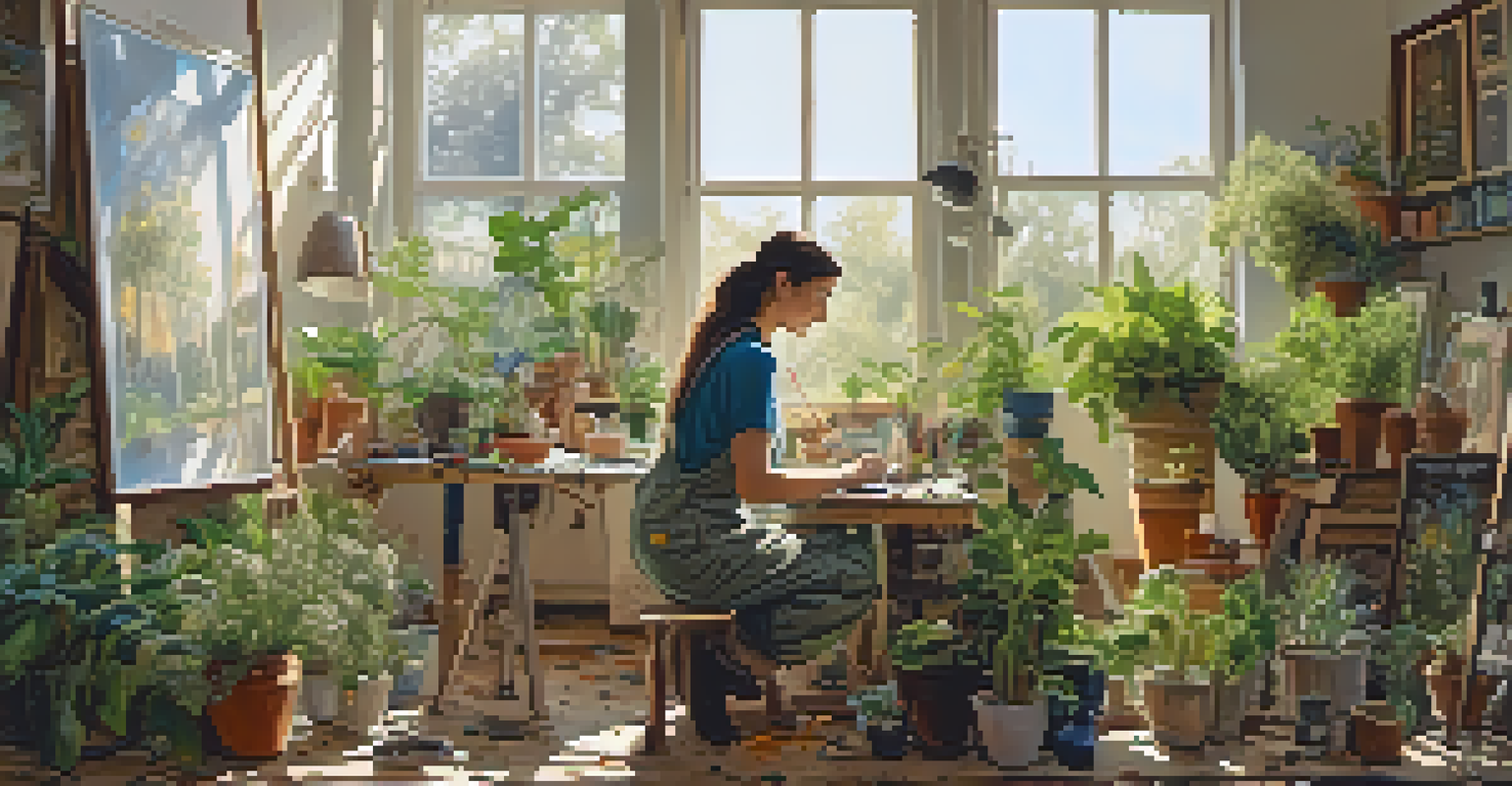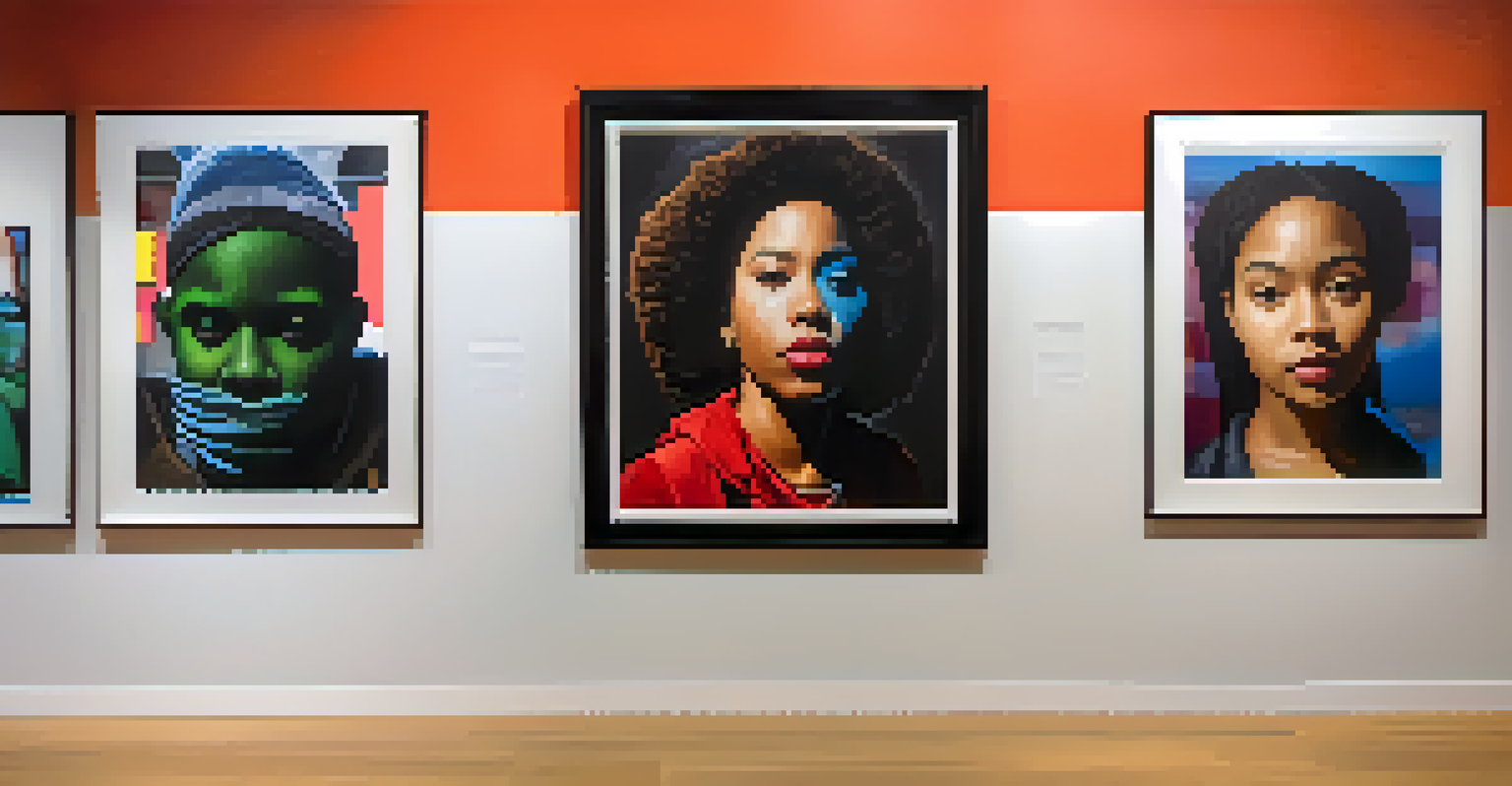Global Art Market Trends: A Historical Perspective

The Birth of the Global Art Market in the 20th Century
The global art market as we know it began to take shape in the early 20th century. With the rise of galleries and auction houses, art became more accessible, and artists gained visibility beyond their local communities. This period marked a shift where art began to be viewed not just as cultural heritage but also as an investment.
Art is the most beautiful of all lies; it is an illusion that gives us a glimpse of the truth.
The post-World War II era saw an explosion in the popularity of modern art, driven by movements like Abstract Expressionism. Artists like Jackson Pollock and Mark Rothko became household names, and their works fetched staggering sums at auctions. This new perception of art as a commodity laid the groundwork for today's art market dynamics.
In this context, the emergence of international art fairs, such as Art Basel in 1970, further propelled the global art scene. These events created a platform for artists, dealers, and collectors to connect, leading to increased sales and a burgeoning interest in contemporary works.
The Impact of Technology on Art Transactions
As technology evolved, so did the art market. The introduction of the internet in the late 20th century transformed how art was bought and sold. Online platforms like Saatchi Art and Artsy opened the doors for artists to reach global audiences, breaking down geographical barriers.

The rise of social media has also played a crucial role in shaping trends. Artists use platforms like Instagram to showcase their work, build a following, and interact with potential buyers. This direct engagement allows for a more personal connection between artists and collectors, changing the traditional gallery-centric model.
Art Market Evolution in the 20th Century
The early 20th century marked the rise of galleries and auction houses, transforming art into a global commodity and investment.
Moreover, the emergence of blockchain technology has introduced new possibilities for authenticity and provenance, giving buyers more confidence in their purchases. This innovation is particularly relevant in an age where art forgery remains a concern, highlighting the intersection of art and technology.
Shifts in Art Collecting Demographics
The demographics of art collectors have shifted dramatically over recent decades. Traditionally dominated by older, affluent individuals, the art market is now seeing a surge in younger collectors, many of whom are motivated by social causes and personal connections to the art they buy. This younger generation values diversity and seeks to support underrepresented artists.
The greatest artist is not necessarily the one who creates the best works, but the one who inspires others to create.
Additionally, the rise of the millennial and Gen Z collectors has brought a fresh perspective on art ownership. Many are interested in experiential purchases, such as art installations and immersive experiences, rather than traditional framed pieces. This shift reflects a broader trend towards valuing experiences over material possessions.
As these new collectors enter the market, they are challenging the status quo, pushing for greater inclusivity and transparency within the art world. This evolution not only diversifies the market but also expands the narrative surrounding what art can represent.
Globalization and Its Influence on Art Trends
Globalization has significantly influenced art trends, allowing for a cross-pollination of styles and ideas. Artists from different cultures now collaborate and draw inspiration from one another, enriching the global art landscape. This interconnectedness has made the art world more vibrant and diverse than ever before.
Art fairs and exhibitions now feature artists from various countries, showcasing works that reflect a multitude of cultural perspectives. Such events have played a crucial role in elevating international artists and fostering a sense of community among creators and collectors alike.
Technology's Impact on Art Sales
The internet and social media have revolutionized art transactions, enabling artists to reach wider audiences and engage directly with collectors.
However, this globalization can also lead to concerns about cultural appropriation and the dilution of traditional art forms. The challenge lies in finding a balance between celebrating diversity and respecting cultural origins, ensuring that all voices are heard in the ever-evolving art narrative.
The Rise of Sustainable and Ethical Art Practices
In recent years, there has been a growing emphasis on sustainability and ethics within the art market. Many artists are now considering the environmental impact of their work, opting for eco-friendly materials and practices. This trend reflects a broader societal shift towards sustainability, resonating with collectors who prioritize ethical consumption.
Art institutions and galleries are also adapting by hosting exhibitions that focus on environmental themes and showcasing artists who address social issues through their work. This conscious approach not only raises awareness but also engages a new audience that values art with purpose.
As collectors become more discerning about the origins of their purchases, galleries and auction houses are increasingly transparent about their practices. This movement towards ethical art collecting is not just a trend; it is a necessary evolution in how we engage with art and its impact on society and the environment.
The Role of Art in Social Movements
Art has always played a vital role in social movements, acting as a powerful form of expression and activism. From the Civil Rights Movement to contemporary protests, artists have used their work to comment on societal issues and inspire change. This historical perspective highlights art's enduring ability to provoke thought and evoke emotions.
In recent years, we have seen an increase in politically charged art, reflecting global tensions and social justice movements. Artists are leveraging their platforms to address issues like racism, gender inequality, and climate change, often sparking dialogues that extend beyond the gallery walls.
Changing Demographics of Collectors
The art market is witnessing a surge of younger collectors who prioritize diversity, ethical consumption, and experiential art.
Collectors and institutions are beginning to recognize the importance of this socially engaged art, leading to increased support for artists who tackle these themes. This intersection of art and activism not only enriches the market but also fosters a sense of community and purpose among artists and their audiences.
The Future of the Global Art Market
Looking ahead, the global art market is poised for continued transformation. As trends evolve, we can expect to see further integration of technology, with virtual reality and augmented reality becoming more commonplace in exhibitions and sales. This will provide collectors with immersive experiences, allowing them to engage with art in innovative ways.
Additionally, the ongoing emphasis on sustainability and inclusivity will likely shape the future of art collecting. The next generation of collectors may prioritize works that reflect their values, pushing galleries and institutions to adapt to this changing landscape and be more responsive to societal needs.

Ultimately, the future of the global art market will hinge on its ability to remain relevant and responsive to cultural shifts. By embracing diversity, technology, and ethical practices, the art world can continue to thrive while making a positive impact on society.